All about laying ceramic blocks
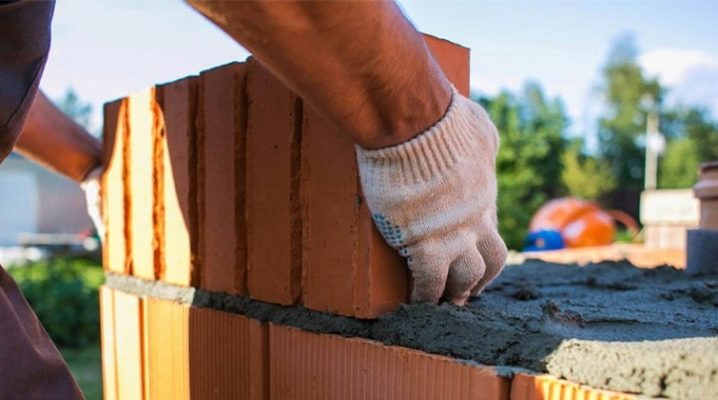
When erecting any structure, the organizer of the construction has a dilemma, which material is preferable to use. The question is difficult, but by selecting a couple of options and comparing them with each other, you can always identify a winner. In certain situations, ceramic block masonry will stand much longer than the same wall made of ordinary bricks or gas silicate blocks.
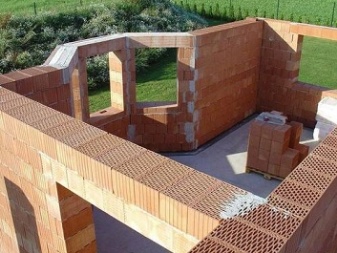
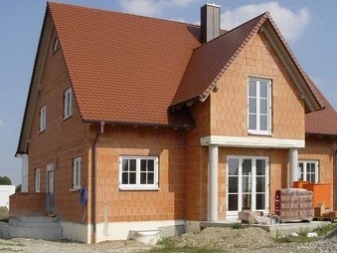
Preparation
In order for the heat-shielding characteristics of the future building to be extremely high, when laying walls in one layer, it is necessary to use a special one, called a "warm" solution, since an ordinary solution forms cold bridges... The mixing scheme is similar to the preparation of a standard sand-cement mortar (it should be diluted in water according to the proportions given on the package).
Before starting the construction of the wall, in order to prevent capillary suction of moisture from the soil, horizontal waterproofing of the foundation is performed. For this, 2-3 layers of roll insulation are laid with an overlap, in the form of a strip up to 10 cm long.
Attention! The ceramic block should be laid at a temperature not lower than + 5 ° C.
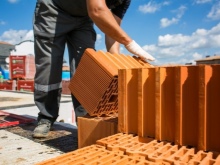
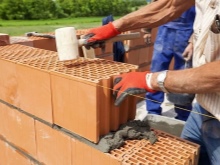
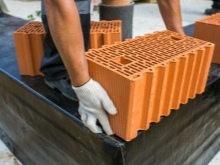
Working tools
To lay "warm ceramics" with your own hands, you will need the following tools and accessories:
- container for solution preparation;
- building level;
- concrete floor or construction mixer;
- trowel (trowel);
- rubber mallet;
- saw-alligator.
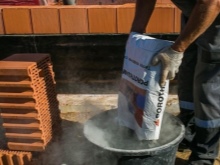
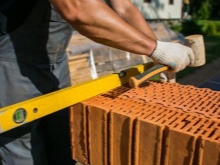
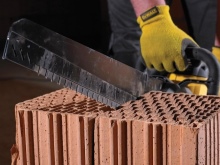
Technology
Step-by-step instructions for laying the first and subsequent rows.
- A layer of cement-sand mortar with a height of 20-25 mm is applied to the waterproofing. Such a thickness will allow to even out the unevenness of the base.
- Place the corner blocks first. Whole products, halves and auxiliary corners with a mortar pocket are used.
- Each block is wetted with water to reduce the absorption of moisture from the solution. The operation makes it possible to increase the time of mobility of the masonry composition. After the corner blocks have been laid, the first row is filled. Adjacent elements are connected by ridges and grooves. To avoid distortions, the subsequent block is placed in special grooves.
- The most important thing - make the first row exactly in the horizontal plane... The ceramic blocks are leveled with a rubber mallet. You cannot hit with a simple hammer, the material can break.
- After the end of the laying, you need to do pause for 12-14 hours for setting the cement mortar.
- The second and all subsequent rows are put on the "warm solution". A suitable joint thickness is 5 mm on average. To prevent the mixture from getting into the cavities of the material, a plastic mesh is placed. Each row starts from a corner. Horizontal and vertical control is carried out by means of a plumb line and a building level.
- When laying from hollow bricks of load-bearing walls, the mixture is applied to the entire plane of the base... The structure is subject to considerable loads, which means that the seam must be continuous. When constructing partitions, the seam of the masonry may be intermittent. It is required to monitor the correct dressing of the vertical seams, they should not converge.
- The smallest shear distance of ceramic blocks is 100 mm. To obtain an element of the required size, it is cut off with a saw, or auxiliary components of a suitable size are purchased. When trimmed to size, the sides of the blocks will be deprived of the "groove-comb" system, in this regard, the mortar is placed in the vertical seam.
- When the inner walls are built in parallel with the outer ones, in the 2nd row, the partition block is placed 15 cm in the outer masonry.
- Every 3-4 rows, it is necessary to lay a masonry mesh or reinforcement with a diameter of 6-8 mm.
- For the insulation of structures, foam or mineral wool is practiced... Several walls are built using reinforcement embeds with a diameter of 6-8 mm. In the required places, openings for windows and doors, openings for ventilation, and so on are arranged. In this manner, the construction of walls is carried out according to the design drawings.
- After the walls are erected, they are immediately taken for the arrangement of the roof, protecting the structure from atmospheric precipitation.
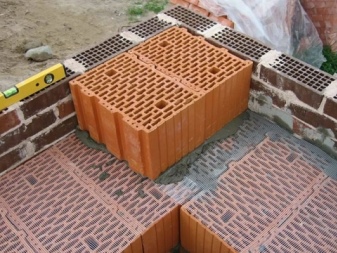
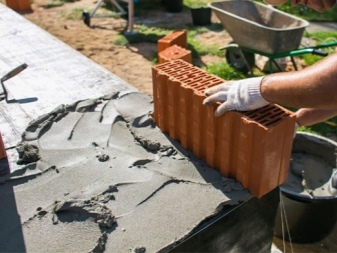
Useful Tips
If you are laying walls from ceramic blocks with your own hands, you may have questions about competent arrangement. For everything to function, you need to follow well-established technologies and listen to the advice of professionals.
- Ceramic blocks can be applied both in private and high-rise construction, only in the latter case the requirements for the foundation are increased.
- To work with ceramic blocks, as well as with ordinary bricks, not difficult, they are large and are connected to each other by a comb and a groove.
- For exterior decoration, you can use plaster or a ventilated facade. When facing walls, in order not to violate their vapor permeability, impregnation or gypsum plaster is used as a vapor barrier material inside, and vapor-permeable materials in the form of mineral wool or heat-insulating plaster are used from the street.
- When constructing a single-layer wall do not use ordinary solution, in this case warm is used.
- If you intend to install insulation, you can use ordinary cement mortar.
- The use of a warm solution, in comparison with the usual one, makes it possible to increase the efficiency of the building's thermal insulation by 15-20%.
- For laying 1 m3 of wall approximate solution consumption - 0.07-0.1 1 m3.
- When the walls are made of blocks with a width of 380, 440 or 500 mm, then their insulation is unjustified, since they have high thermal insulation properties. The funds that you are going to spend on insulation should be spent on decorating external walls or installing high-quality doors and windows.
- When laying, use a universal spatial mounting deviceto simplify and speed up the installation process, evenly lay the mortar, creating an air gap that reduces the thermal conductivity of the mortar joint.
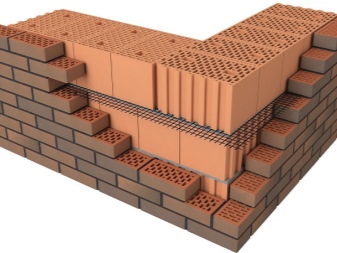
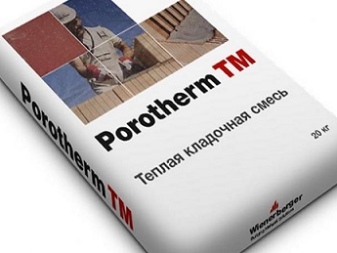
When building from ceramic blocks, it is not necessary to reinforce the walls, but this will not be superfluous. Typically, masonry mesh is practiced in areas where slabs and beams rest.
Here, an armored belt is built from a mesh and a rod with a cross section of 3 mm and everything is poured with a 30 cm layer of cement-sand mortar.
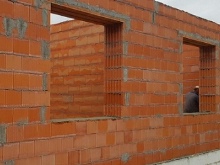
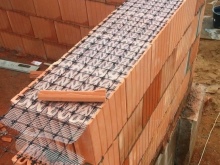
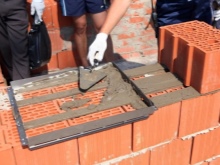
In the next video, you will find instructions on how to build walls from a ceramic block and facing bricks.










The comment was sent successfully.